Ubiquitous healthcare (U-healthcare) is the medical service for checking individual health status at anywhere and anytime using wireless telecommunication technique, so it is getting the spotlight as major part of future industry.
The system of ubiquitous healthcare can acquire user’s bio-signal during free life without any limits of activity (Non-intrusive), and it gives user the information of individual health status or medical opinion that is based on continuously or periodically acquired data. In addition, when an emergency situation occurs, it will be possible to service quick medical treatment by knowing family or physician.
The various U-healthcare researches are currently processing about non-intrusive and non-invasive bio-signal monitoring in Smart Ubiquitous Healthcare Lab at Hanyang University.
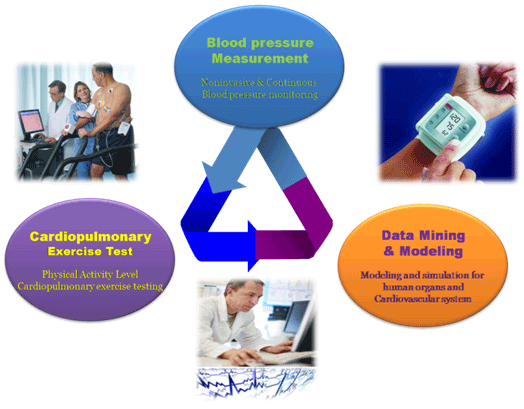
Mainly, researches that are linked with cardiovascular system have progressed, and most of projects have focused on blood pressure, electrocardiography, physical activity, data mining, and physiological modeling.
1. Blood Pressure Measurement & Applications
Blood pressure is a major factor for the diagnosis of adult disease such as hypertension. It is one of major vital signs, so we can find out the sign of cardiovascular disease through the blood pressure measurement. To develop algorithm and device have processed for better estimation of blood pressure and representative researches are Stepwise deflation method, Digital sphygmocorder, Wrist-type ambulatory blood pressure monitor and dual cuff method.
1.1. Digital Sphygmocorder
Digital Sphygmocorder is produced device for non-invasive automatic estimation of blood pressure using applied auscultation. At first, both cuff pressure and Korotkoff sound signals are filtered with appropriate bandwidth. Then, heart beat is detected from the cuff pressure signal by using zero-crossing method. After that, the program calculates energy of each Korotkoff sound beat and estimate SBP and DBP.
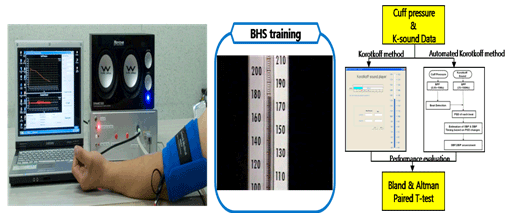
1.2. Stepwise deflation method
In this manner we are studying a few oscillometric methods and the step-wise deflation technique is one of them. Generally, deflation is performed continuously on fixed rate as 2~4 mmHg but this technique deflates step by step. The advantage of the step-wise deflation is stability of getting pulse signal. Our study is to modify and enhance the existing method by decreasing the number of pulse detection. The study shows that detecting only one pulse per step is as reliable as conventional method

1.3. Wrist type ambulatory blood pressure monitor
As PTT is an abbreviated word of pulse transit time, this research used wrist cuff module, wrist PPG sensor, and finger PPG sensor. It is processed in real-time, and SBP, DBP are essentially estimated using linear regression model. Moreover, estimation of SBP and DBP is used time interval of signals between wrist and finger PPG for ambulatory situation. Convenient and correct measurement of ambulatory blood pressure is expected on this research.
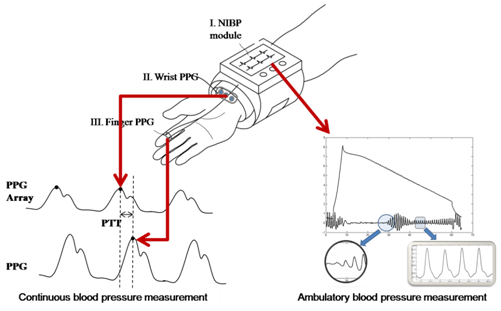
2. Sports Medicine & Physiology
Researches about posture or physical activity classification and estimation of physical activity energy expenditure are actively processing in sport science and sports medicine fields because the information of physical activity is one of major parameters for analysis of bio-signal. Current researches about relationship between physical activity and electrocardiogram and physical activity classification have been processing in our laboratory, and additionally development of device and research about cardiopulmonary exercise test are processing together.
2.1. Cardiopulmonary Exercise Test
The research that is related with cardiopulmonary exercise test(CPET) is processing based on produced device in our laboratory. Mostly this is a research about monitoring system that can acquire signals of ECG and respiration, and we also set up whole system for analysis of cardiovascular or cardiopulmonary functions following exercise.

2.2. Physical Activity & Physiology
The importance of physical activity information has been increased as a second opinion for diagnosis of cardiovascular disease. Therefore, researches of estimating physical activity or energy expenditure are actively processing using an accelerometer. We already produced the device for acquiring data of ECG and accelerations, and researches, such as physical activity classification or energy expenditure estimation, are processing in laboratory.
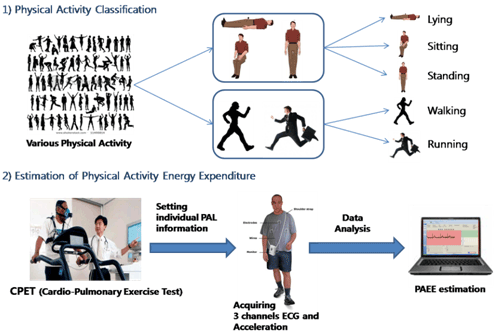
2.3. Short-term benefit of smoking cessation
This research is about the analyzing variability of ECG parameters, such as HR, ST, following exercise between two groups(Non smoking, Stop Smoking).
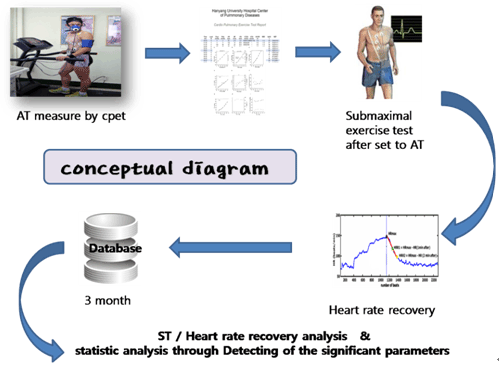
3. Data Mining
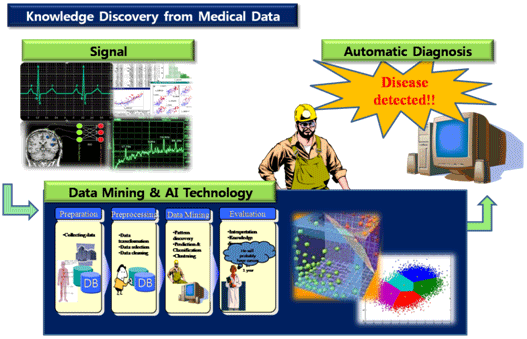
: Recent progresses in data mining and machine learning have promoted computer-based approaches to solve medical problems, e.g., computer-aided diagnosis (CAD), expert systems, and prognostic studies. Support Vector Machine (SVM), one of the most actively developed predictive models in machine learning community, has been successfully applied to a number of medical problems. Currently, we are studying on automatic diagnosis method of electrocardiogram (ECG) and Fetal Heart Rate (FHR) data.
4. Modeling and Simulation for Human Organs and Cardiovascular System
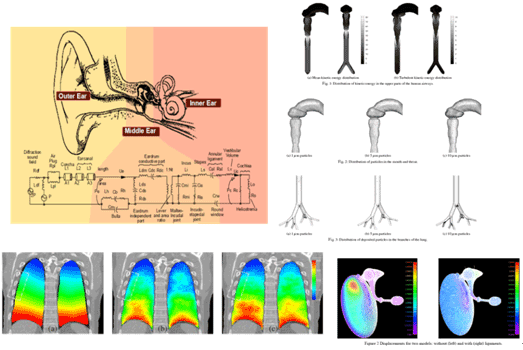
: A better understanding of the human body provides very precise information that can help us improve the well-beings. There is considerable scientific interest in modeling various parts of the body, and progressively moving to CAE models of the entire human body. In addition, this growing complexity and accuracy of physiological modeling brings critical information to biomedical and medical areas. Virtual human modeling is also more widely considered for surgery planning and training. These very fast progresses during recent years have been made possible to analyze of finite element method in simulations. Currently, we are studying on modeling of the outer ear and inner ear damage from external pressure, and analysis of the lung (bronchial tubes, pulmonary alveoli) damage from external pressure. |
